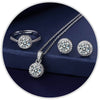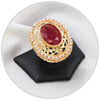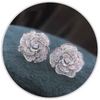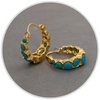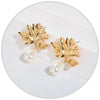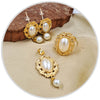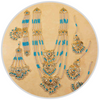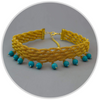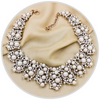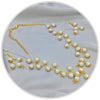The Symbolism Behind Popular jewellery Pieces in Pakistani Culture

Pakistan’s culture has always had a rich history with jewellery being an important aspect hence it is steeped in our traditions, values and historical events. Each jewellery item is not simply an ornament but a symbol that carries more than material significance. The jewellery worn by both men and women from weddings to everyday wear is more than just a fashion statement — it represents cultural background, social standing as well as personal identity.
In this blog post, we’ll dive into some popular symbols used in Pakistani jewellery designs. What are these ornaments’ roots and what do they mean? We will also discuss their context in different cultures during this journey through the world of Pakistani jewellery so you can appreciate its place in Pakistanis’ hearts.
- The Cultural Importance of jewellery in Pakistan
Jewellery means much more than decoration only for Pakistan. It is integrated into the fabric of society and forms part of life itself. Whether it’s a wedding or even daily life, wearing some form of jewellery marks important milestones.
1.1 Historical Roots
The South Asian subcontinent has been using jewellery for thousands of years now . In fact the oldest civilization on earth, the Indus valley civilization left behind remains indicating early usage most likely due to high value associated with them which were probably pure gold or other valuable materials like ivory or shells . This practice continues today where It has been modified over time yet without losing importance within Pakistani culture .
1.2 Social Status and Wealth
Social stratification is often demonstrated through jewellery ownership in Pakistan where people often view it as the reflection of wealth or its lack thereof . As a result , they are covered with complex golden decorations on the day of marriage , which in itself signifies prosperity and social standing . Therefore, the quality of such pieces is proportional to the status level of the wearer. This also accounts for why dowries are considered as significant cultural aspects since they involve giving gold jewellery to the groom by the bride's family.
- Popular jewellery Pieces and Their Symbolism
Here, we will take a look at some of Pakistan's most precious and symbolic jewellery pieces. Each has its own special story and meaning.
2.1 Nose Ring (Nath)
In Pakistani culture, one of the oldest pieces of jewellery is a nose ring called Nath. At weddings it is common to see brides wearing large ornate nose rings that are often connected to earrings by delicate chains. This shows that she is a chaste bride and married woman. It is also believed to bring good luck into her marital life.
The tradition of wearing a nath has prevailed from ancient times continuously through generations. Nonetheless, although its design may differ across regions – from large circular hoops found in Punjab to more subtle shapes in Sindh , it still retains its symbolic essence.
2.2 Bangles (Chooriyan)
Chooriyan, also known as bangles, are another significant jewellery piece in Pakistani culture. These colourful, glass bracelets worn on the wrist go beyond just being a fashion accessory. They represent joy, affluence and an ideal married life. It’s customary for brides to wear an assortment of bangles on their wedding day, often in colours that match their bridal attire.
Also in everyday life women put on bangles to show they are married and it is believed that they bring good luck. They make a delightful sound when you’re walking; hence they are used during ceremonial occasions.
2.3 Earrings (Jhumkay)
Earrings or Jhumkay form an integral part of Pakistani jewellery especially during weddings and festive times. The traditional jhumkay design of earrings demonstrates the bell shape with intricate designs which symbolises femininity and gracefulness. They can be passed down through generations making them family treasures having great sentimental values.
Besides being beautiful, wearing earrings in Pakistani culture enhances femininity and attracts positive energies to women’s lives. Bigger ornate earrings are more valued for both their beauty as well as the social status they represent.
2.4 Necklaces (Haar)
Necklaces referred to as haar by Pakistanis form the crux of a bride’s jewellery set. They could be simple chains made from gold or elaborate ones with precious stones embedded into them with complex patterns carved out on them. That chain stands for riches, rank and protection against evil spirits among many other notions held by people concerning its usage spiritually close to one’s heart.
One of the famous types of necklace hails from Punjab called rani haar because queens used to put them on long time ago before becoming popular these days among brides meaning grandeur and elegance during weddings other than this itself depicting its cultural worthiness.
2.5 Rings (Angoothi)
In Pakistani culture, rings have a great significance for example during engagement and wedding ceremonies also. The exchange of rings between the bride and groom symbolises their love and commitment to one another. Their sentimental value increases because in most cases they are passed from generations to generation within the same family.
Rings are worn daily as a sign of fashion and status in addition to bridal ceremonies. These rings are usually made of gold with gemstones studded on them forming the most popular ones which many people believe bring good fortune hence prosperity.
2.6 Anklets (Payal)
Payal or anklets is another common women’s jewellery piece especially during weddings and cultural festivals. In Pakistani culture, ankle bracelets represent femininity, beauty, and elegance. This adds up delightfully with a sweet jingling sound that further indicates that there is a bride round.
Anklet could be silver in their make-up having simple chains up to those elaborate designs comprising of bells plus charm among others and they are put on both ankles symbolising marital happiness alongside richness.
2.7 Toe Rings (Bichiyan)
Toe rings commonly known as bichiyan are traditionally worn by married women in Pakistan.They usually wear silver toe-rings in their second toes of each foot.As well as showing they are married, it is believed that toe-rings have some health benefits such as regularising menstrual cycles among other reproductive health issues improvement purposes.
In Pakistan, Pakistan’s culture and tradition permits the use of jewellery by women. While some societies have specific designs for married women only, young girls too put on such items as a fashion statement.
- Jewellery in Religious and Cultural Festivals
It should be noted that Pakistani jewellery is not just for weddings and everyday wear, but also plays an important role in religious and cultural festivities. Through these events, traditional jewelries are given space to shine as well as cultural heritage commemorated.
3.1 Eid Celebrations
Eid is one of the most important religious festivals in Pakistan and is celebrated with great fervour. It is customary for women to dress up on this day with their finest clothes and pair them with jewellery pieces. Among the jewels mostly worn during Eid celebrations are gold ones which symbolise wealth and happiness.
Eid often sees women being given precious stones as gifts to express its importance in Pakistani society. The exchange of jewellery among family members strengthens ties between them while reminding them about their culture and religion.
3.2 Basant Festival
Jewellery takes centre stage during Basant, which marks the onset of spring. Even though kite flying dominates this festival’s content; people also dress up colourfully at this time of year. Yellow is considered to be an official colour of Basant whereby many women choose to adorn themselves with earrings or bangles that match their outfits as they welcome spring.
During the bashant period, jewellery signifies a new start that comes with the season changeover. These bright colours are used to remind people about joyous moments associated with blooming times within Pakistani cultures.
- The Influence of Regional Styles on jewellery
Pakistan’s regional jewellery styles mirror the country’s diversity where all regions contribute unique designs towards Pakistani ornaments making it rich tapestry in itself.
4.1 Punjabi Jewellery
The boldness and intricacy of Punjabi ornaments makes them unique from other types found elsewhere across Pakistan. Punjabi women often wear large jhumkay, heavy nath, and intricately designed rani haar. Gold is commonly used in Punjabi jewellery to show wealth and prosperity. Matha patti (headpiece) and choora (bangles) are two of the most important articles of clothing that can be found in a typical Punjabi bride.
4.2 Sindhi Jewellery
Sindhi jewellery is characterised by its vibrant colours that are full of life. This type of jewellery is made using glass, beads, or semi-precious stones. The ajrak motif which features prominently on necklaces as well as bangles happens to be among the unique sindhi fine pieces of jewellery. Kapan are large ornate earrings worn by Sindhi women alone within all other regions.
4.3 Balochi jewellery
Balochi jewellery is famous for its tribal influences and weighty designs. Silver is preferred metal in Balochistan meaning that it has got intricate designs and patterns featured in most ornaments made thereon. Some popular items among Balochi women include tasbih (prayer beads) and tika (forehead ornament). These objects are not simply adornments but they also represent the rich tribal heritage from this region.
4.4 Pashtun jewellery
Pashtun jewelries are characterised by their big sizes as well as masculinity displayed through them; they always stand out due to their chunky styles. Coins and beads are some examples of such materials used in ornaments by pashtuns








